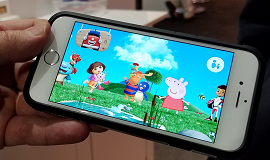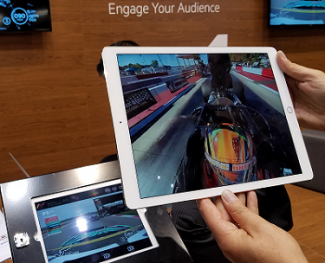A challenging time for Netflix, intense interest in the user experience and user interfaces, and the importance of always-on connectivity were topics that analysts and executives saw as well-represented at the IBC 2016 tradeshow, which boasted a record 56,000 attendees and featured exhibitors from a wide swath of the video industry – from broadcasters to OTT providers and the video delivery specialists in between.
The user experience is becoming top of mind for providers, said Kent Steffen, president of global OTT business for CSG International. “Two years ago it was like, can we deliver video to all these devices? Last year’s wave was 4K, and how it would require a whole new supply chain and ecosystem to come together … and this year it’s really focused so much more on the customer. How (providers) use big data, how they use cloud, how they use mobile, and how they use analytics around the customer to really make it simple for the consumer experience.”
Improved user interfaces and new ways of watching the same streamed event were part of several vendors’ sales pitches at the show. TiVo, for example, which formally mashed Rovi into its brand during IBC, showed off a vastly revamped UI with “big, bold images, and easy to navigate sliding rows,” said Colin Dixon of nScreenMedia. The new interface also includes “Predictions,” which makes educated guesses on what users are looking for based on what they have tuned in to watch in the past.

“There’s no better business to be in than the interface business these days,” said Trisha Cook, who leads marketing at the company, in an interview with FierceOnlineVideo at the show.
That speaks to the importance that programmers and distributors are attaching to user interfaces, which have remained steadily clunky in past years when it came to finding content. “Although operators are increasingly making recent show episodes available in VOD systems, the data suggests viewers just aren’t finding them,” said Dixon, citing Digitalsmiths’ recent third-quarter video viewing survey.

prototype 360-degree video experience (center) it plans
to deliver in the future.
The enhanced multiscreen interface, plus improved connectivity, are key to attracting and keeping younger viewers, said Paolo Pescatore, a CCS Insight analyst, in an interview with Fierce at the show.
“Content is fundamentally important, but even more important is that content and connectivity come together,” Pescatore said. Millennials and younger kids especially see always-on video streaming as a normal and even necessary part of their lives. “This generation wants to be connected all the time.”
And that connectedness, made possible by ensuring that users can find the content they want to watch, will continue to drive user subscriptions, viewer traffic, and ultimately revenue, he said.
That could actually mean hard times for Netflix, which so far has struggled to build subscribers in the new territories where it launched at the beginning of 2016. Netflix’s original content and its in-depth audience measurement – “it’s hard to find anyone else who can do it as well as Netflix does,” Pescatore said – are strong points, but with over 150 operators and providers planning to launch or already launching OTT services, the provider faces increasingly strong competition worldwide.
“Netflix’s U.S. business is a cash cow for its international operations,” said Pescatore, “but they need more subscribers. Its subscription rates are not growing as fast as they need or want it to do. I think they’re going to run out of cash.”
Netflix itself has been working to improve its UI, posting results of recent testing on its tech blog in May.
But, does an improved interface alone spell cash for either Netflix or other content providers? In the short term, perhaps not. Long term, however, a compelling interface and improvements in search and recommendation could be a deciding factor in the race for subscribers.
“It’s really about the experience and how awesome or easy they can make it for the consumers,” said Steffen.
For more:
- see this nScreenMedia post
- and this post
Related articles:
Time Warner leads $12M investment round into OTT interface maker You.i TV
TiVo undergoes major UX overhaul
To grab part of $500B video market, advertisers and creators must up their game, panelists say
SeaChange demos new UX capabilities as transition to software company continues
The data paradox of a predictive TV recommendations engine